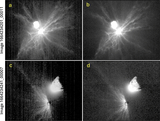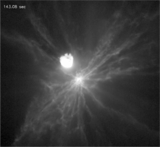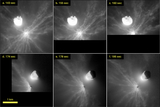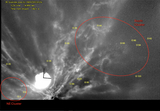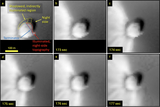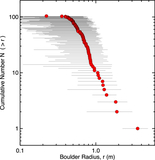Image Details
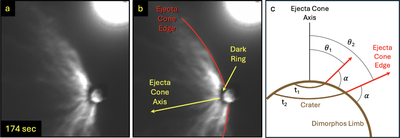
Caption: Figure 7.
(a) Image showing the walls of the ejecta cone, seen from nearly perpendicular to its axis, and (b) the same image with annotations highlighting the curvature of the walls. (c) Diagram illustrating how the curvature of Dimorphos’s surface causes the angle between the cone’s axis and the outflowing ejecta (θ) to increase with time as the crater grows, while the angle with respect to the local surface (α) remains constant. Panel (b) also highlights the dark ring at the base of the ejecta cone, which is caused by optically thick dust that blocks sunlight from penetrating through to the back of the cone.
Copyright and Terms & Conditions
© 2025. The Author(s). Published by the American Astronomical Society.


